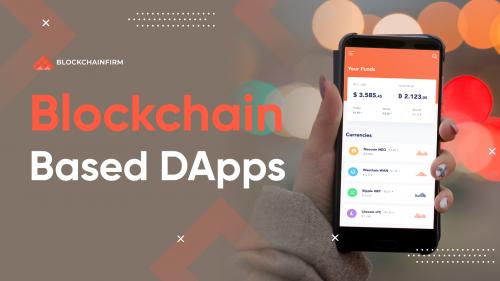Developing a Decentralized Application for Businesses

The prospect of lending your computer hardware for computations or safe-keeping information for a third-party and earning would be a far-fetched idea in the past. But with the advent of Decentralized applications(dApps), they are made possible.
Powered by blockchain, dApps are highly sought after by multiple businesses owing to the benefits it can offer. In this article, let us understand how dApps are different and how to develop them for business.

What are dApps?
dApps are computer programs that are powered by blockchain technology functioning with a decentralized approach to facilitate services for a purpose. They are widely administered in businesses that demand both security and transparency in operations. An example of dApp implementation would be in the supply chain industry that requires discretion in transactions and transparency in processes.
What are the key elements of dApps to be considered in development?
dApp development differs from traditional app development owing to its key elements.
Open-source Coding:
dApps must be built over open-source codes as they offer operational and functional versatility. By restricting development from a single origin, they cannot be controlled by a single authority.
Decentralized:
Data related to operations and transactions must be stored on a single distributed ledger. Although they are transparent and can be accessed by everyone linked to them, records made are immutable thus ensuring no data tampering.
Operational Algorithms:
dApps validate the data entered on the ledgers via a common consensus protocol. This is facilitated by multiple nodes linked to the blockchain. Validation algorithms must be at the heart of developing dApps.
Steps involved in developing a dApps:
- A well-defined purpose and use-case model is required to begin the development of a dApp. They determine the code to be developed for operational and design requirements further.
- The next step is to implement decentralization via a common consensus mechanism developed for validation purposes.
- Choosing the right platform to develop the code is crucial. It varies based on requirements such as scalability, transaction speed, and private or public domain, etc.
- Development of both the front and backend of the application tailored to preference.
- Testing is an integral part of development. Although listed separately due to its importance, it is often associated with every stage of development.
- Deployment is the final step of development. As dApps are unlike traditional applications, once live on servers they cannot be modified further. Hence meticulous checks and verifications must be in order before deployment.
In summary, we have gone over the base for the knowledge base and the technical requirements involved in understanding and developing a dApp, that can aid any application.
Explore More —> Blockchain DApps Development
Post Your Ad Here
Comments